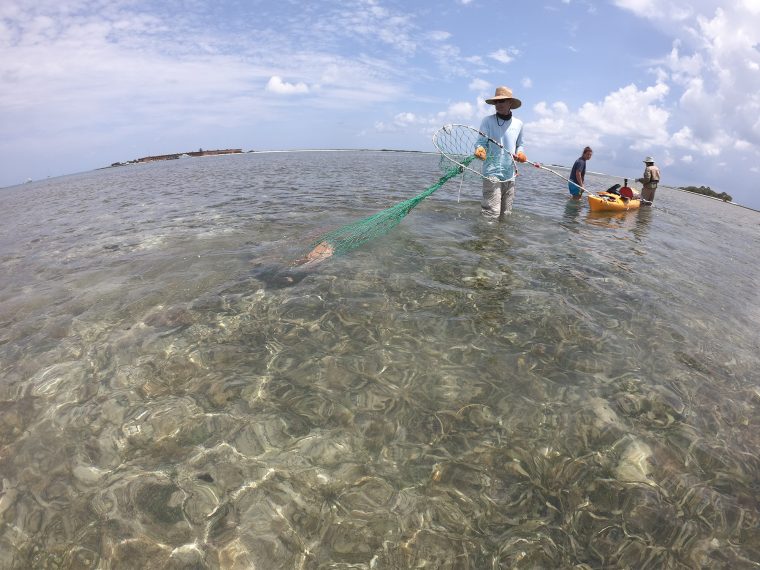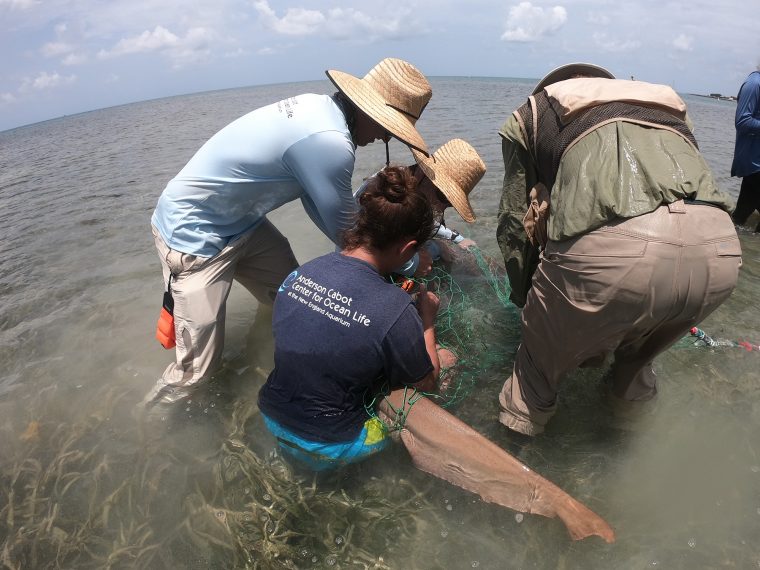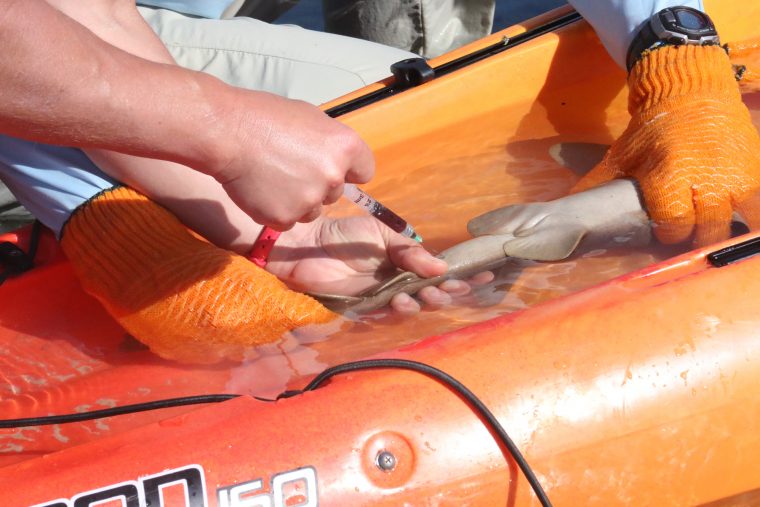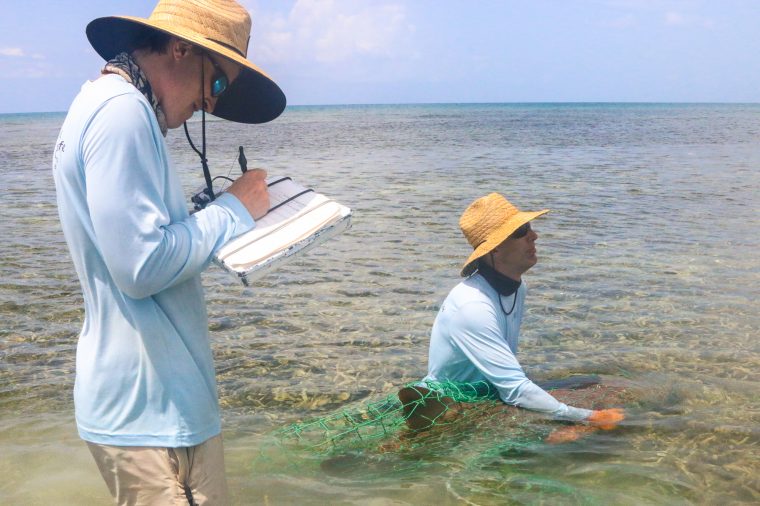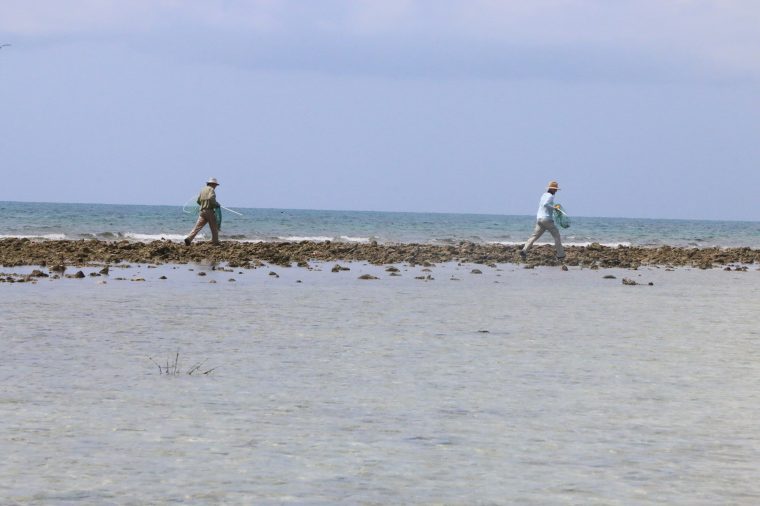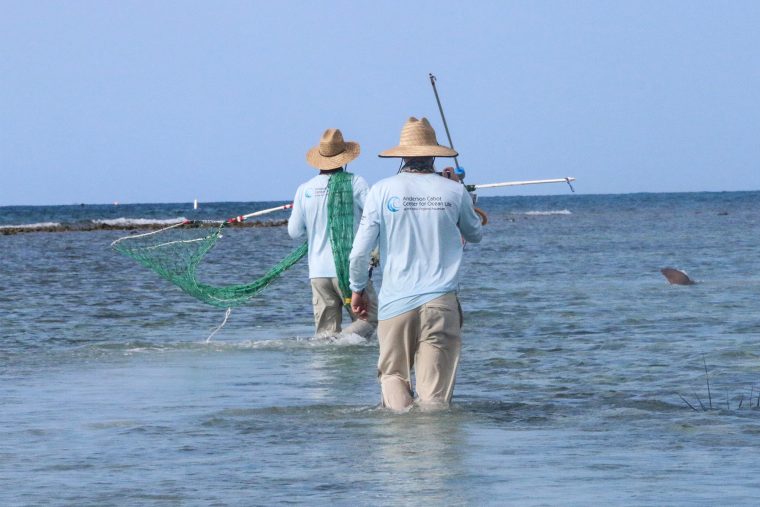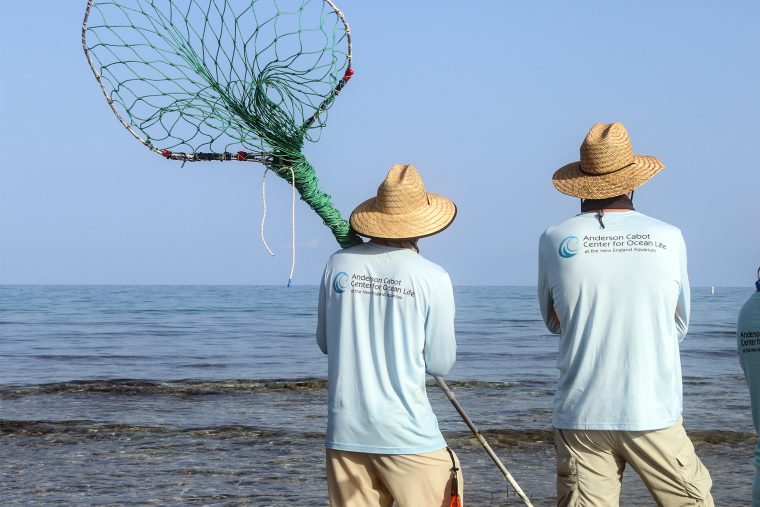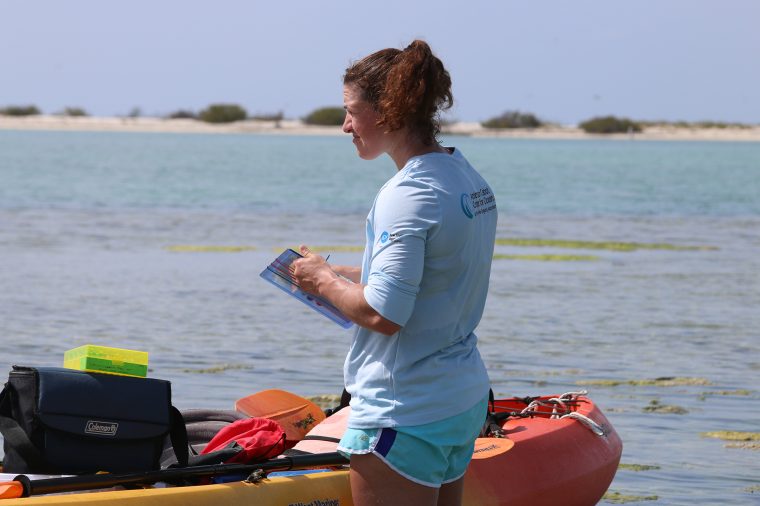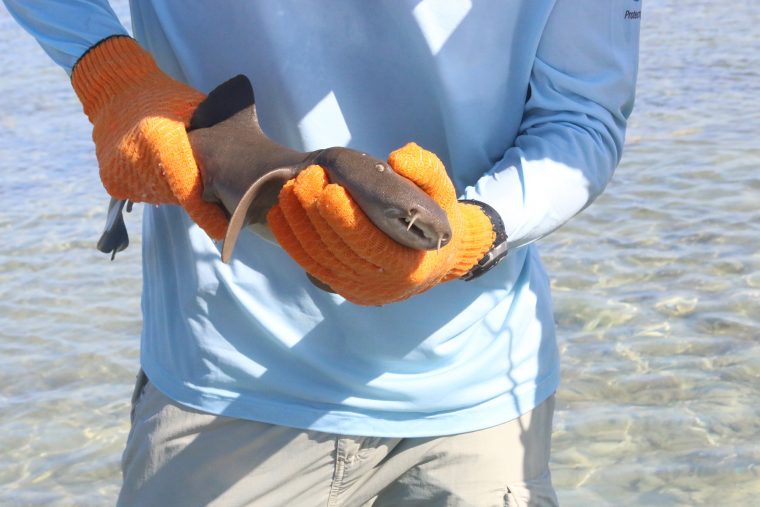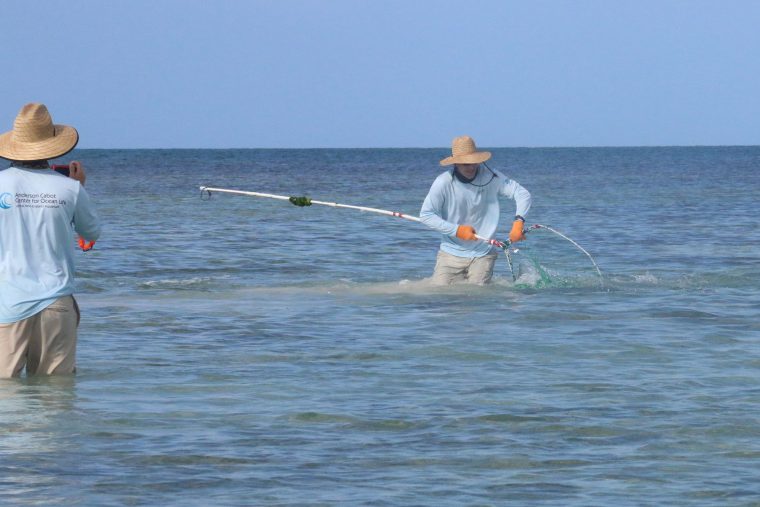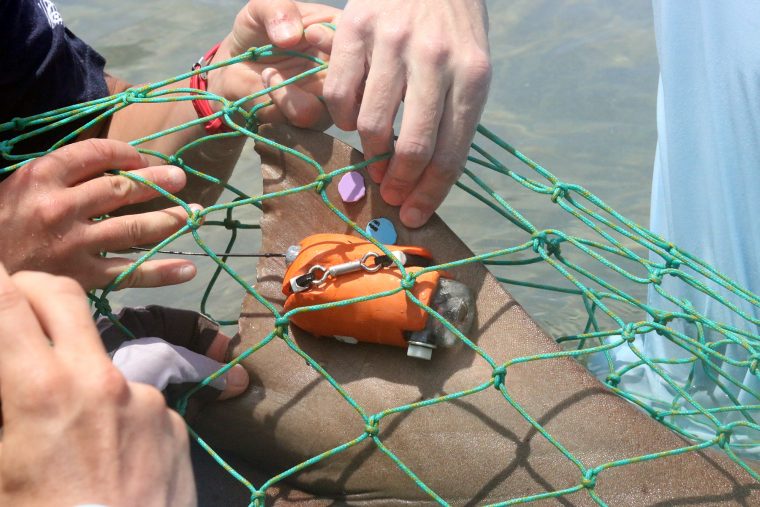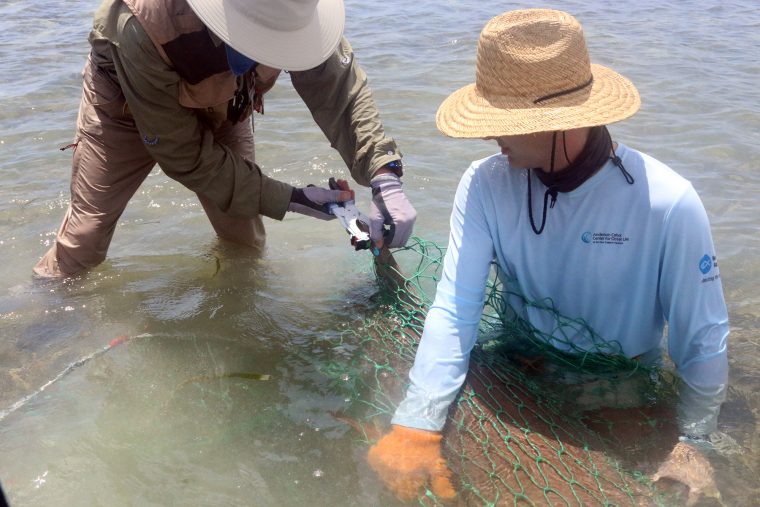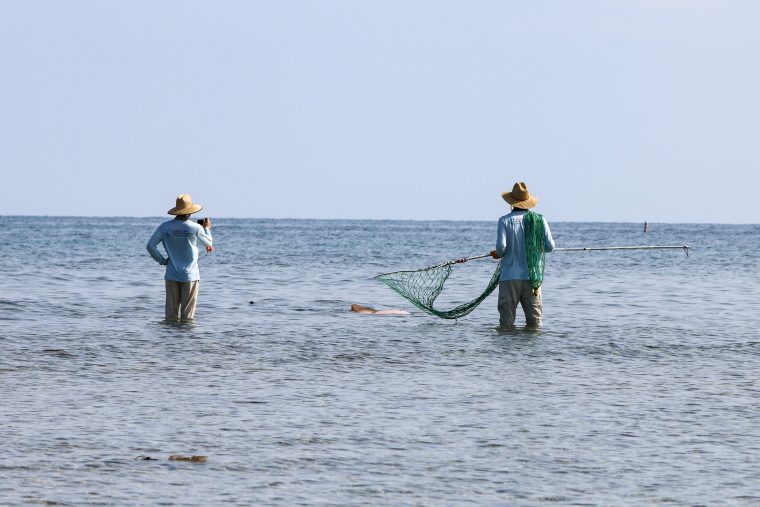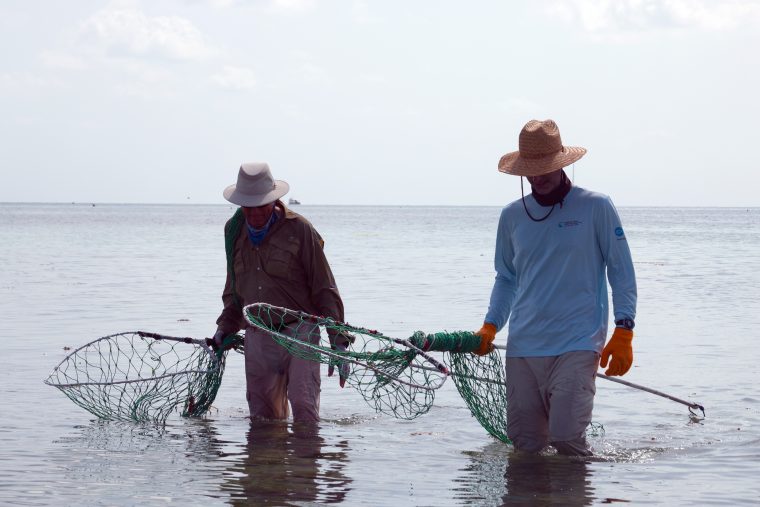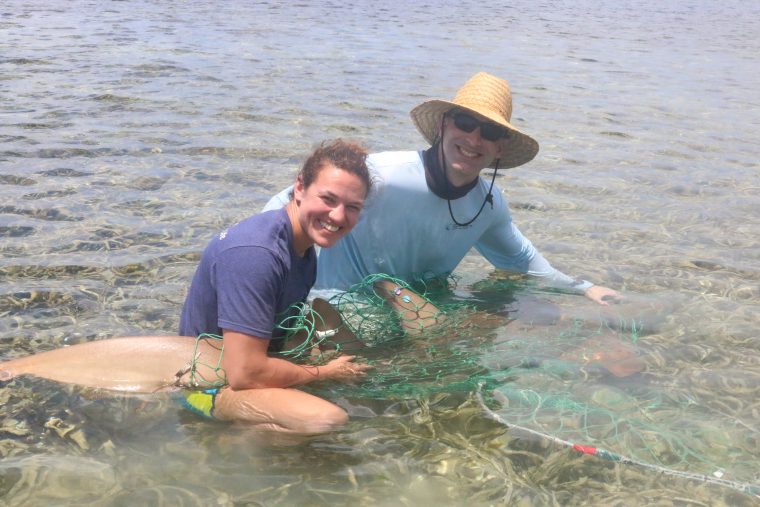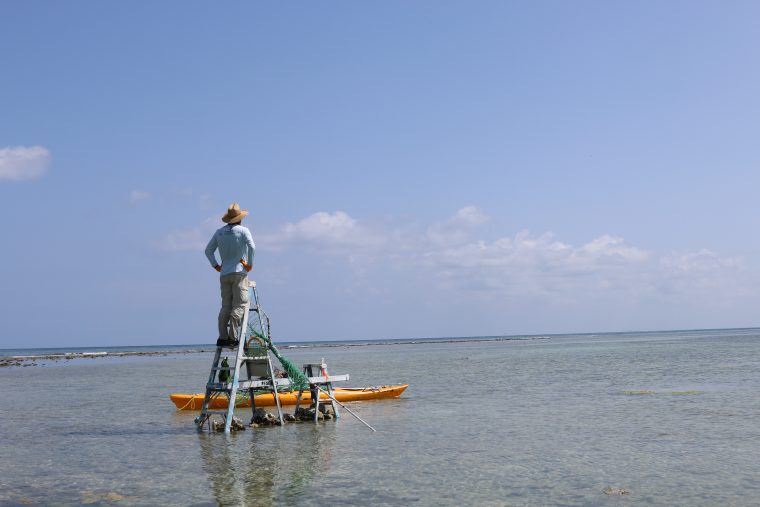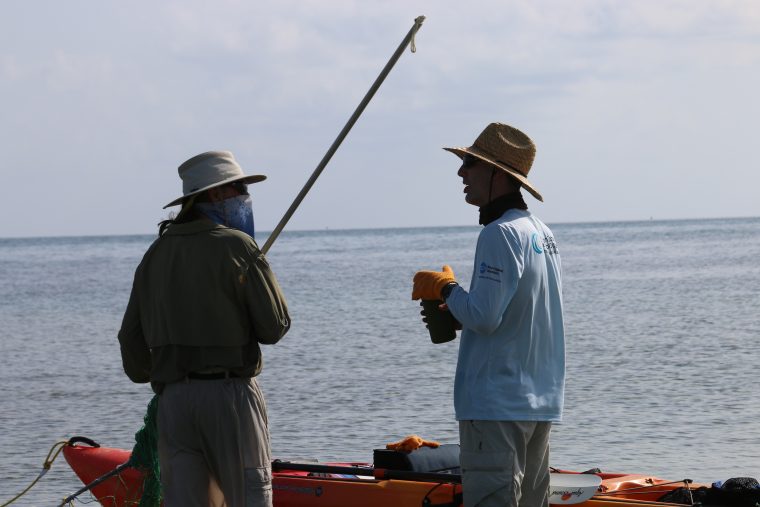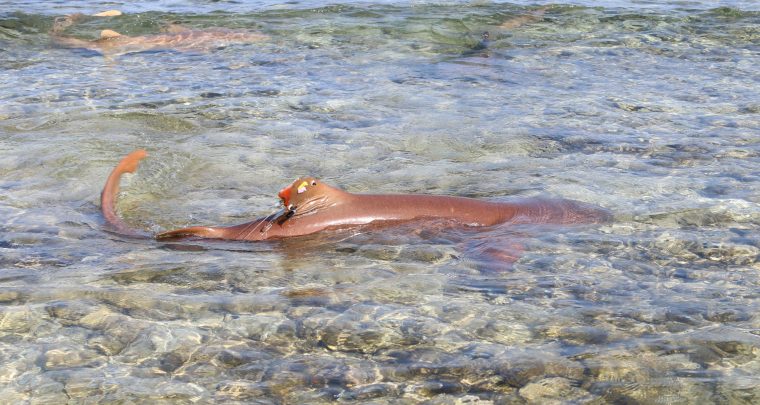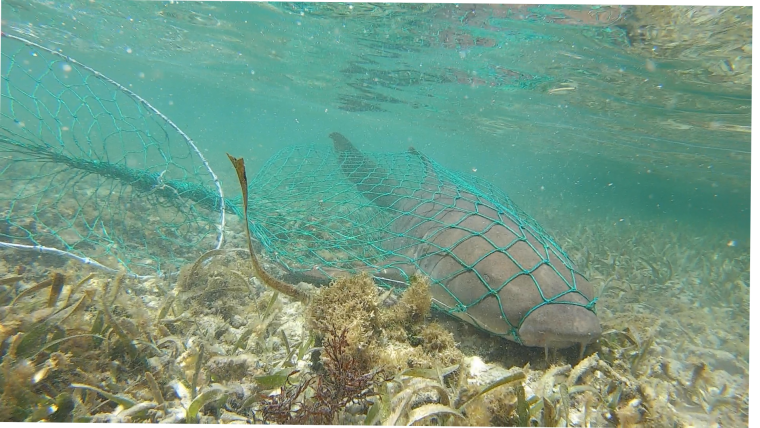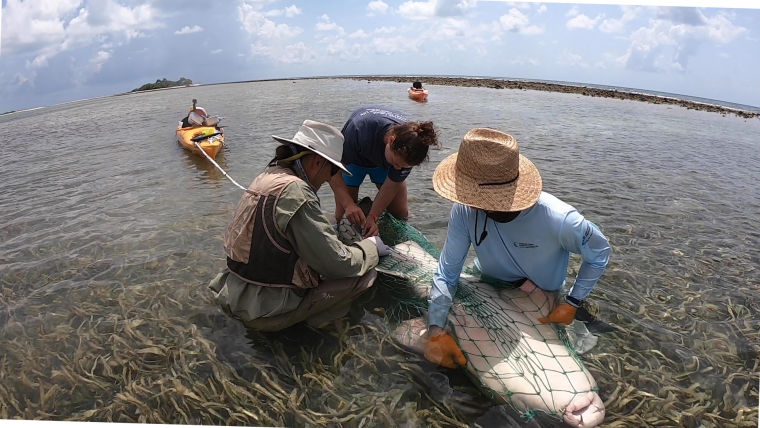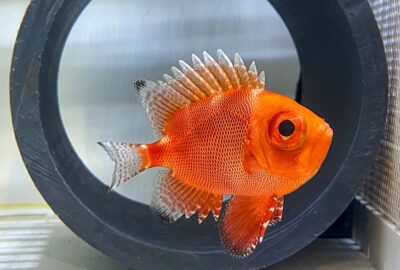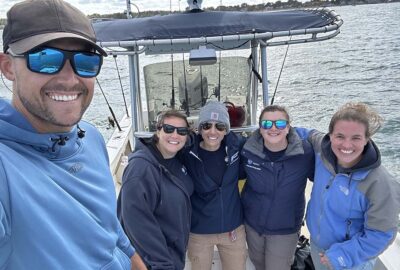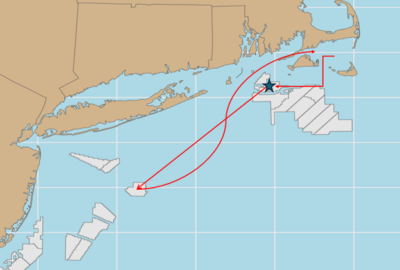Please note: We strongly recommend purchasing tickets in advance to guarantee entry, as we do sell out during school vacation week (April 19 – 27).
A Day in the Field: Science, Sun, Shark Mating
By New England Aquarium on Wednesday, October 30, 2019

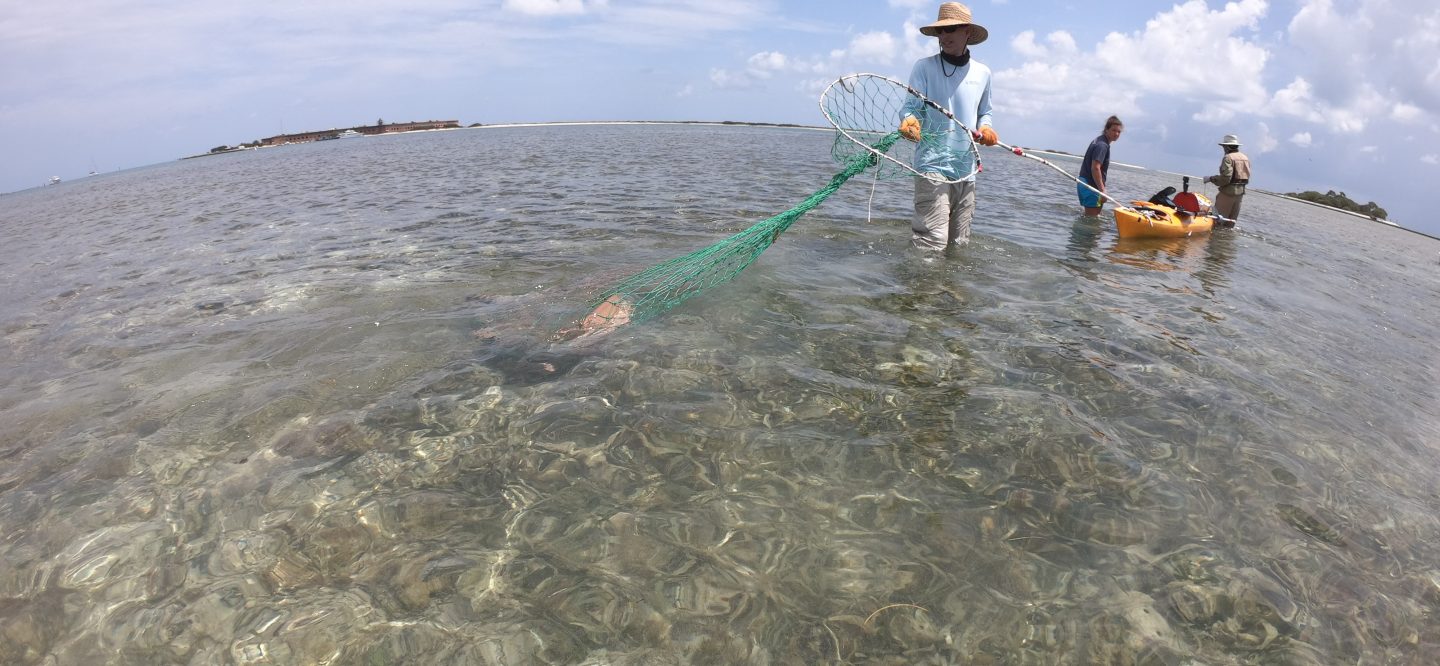
Clear skies and not a hint of a breeze. It’s only 8 a.m. and the temperature is already well into the 90s as we paddle our kayaks through the coral reef under a cloudless sky.
We’re nearly 70 miles west of Key West in the remote Dry Tortugas National Park and it looks like it’s going to be a sweltering day of fieldwork.
If you ignore the seaplanes, it’s easy to imagine yourself back in the mid-1800s. Fort Jefferson—the largest brick structure in the Northern Hemisphere and a key outpost during the Civil War—looms behind us. Like sentries of the past, we will spend the day staring out into the jewel blue water for any hint of movement. Instead of searching for Confederate ships on the horizon, we’re on the lookout for fins, specifically the thrashing and rolling fins of mating sharks.
A few thousand feet from the fort, in shallow waters at the edge of the reef, a 12-foot aluminium ladder marks the home of the longest-running shark behavior study in the world. Since 1992, Wes Pratt and his wife, Theo, have been coming to the Dry Tortugas to study and tag the nurse sharks (Ginglymostoma cirratum) that have visited this reef for more than a century. Wes is a retired NOAA Fisheries shark scientist and current Adjunct Scientist at the Aquarium’s Anderson Cabot Center for Ocean Life. Since 1998, Dr. Nick Whitney, an Anderson Cabot Center Senior Scientist, has joined the Pratts on this vital fieldwork. They spend several weeks here every June.
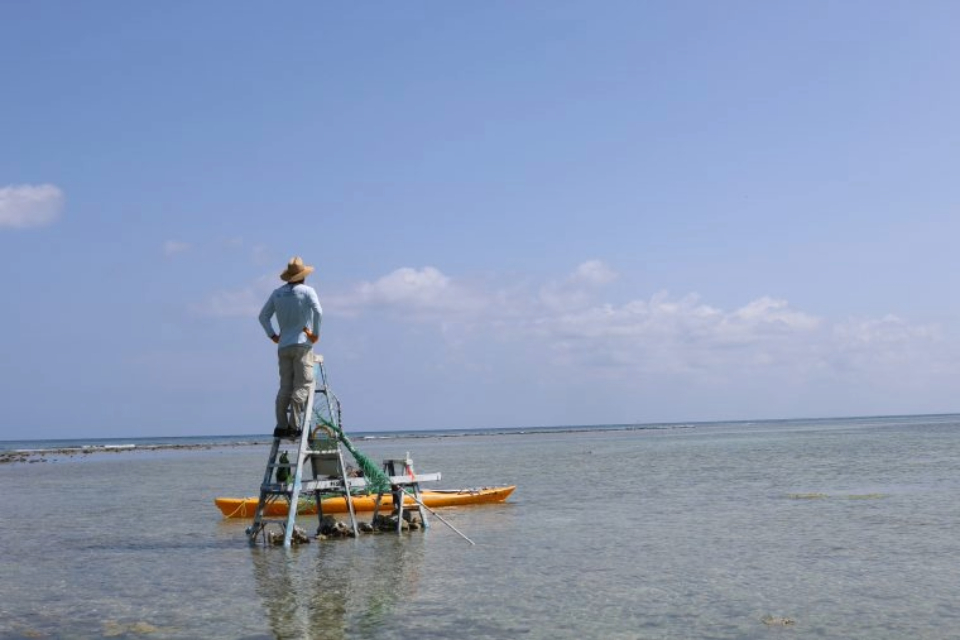
What makes this research so important? For such popular animals, we know shockingly little about some behaviors of sharks. In fact, almost everything we know about shark courtship and mating behavior comes from this Dry Tortugas study. It’s the only place that these behaviors can be observed on a predictable basis. It’s also the only Marine Protected Area in the world that protects a shark mating ground.
Nick waves us over. He and Wes are already at the site with research assistant Connor White, who is standing a few steps up on a ladder and staring intently through a pair of binoculars. All three are covered from head to toe against the harsh sun: straw hats, gloves, long sleeves, and long pants.
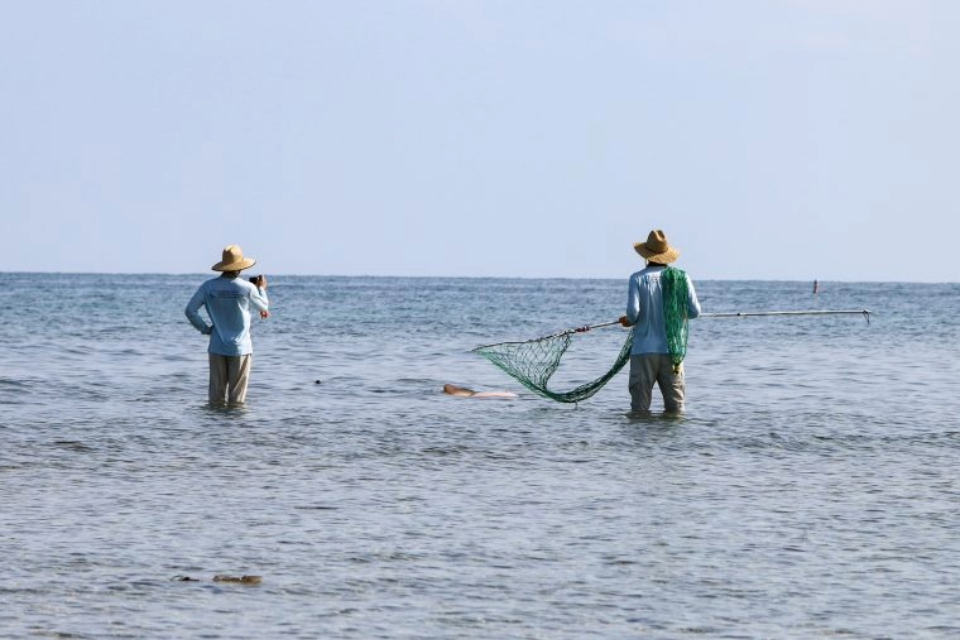
It’s been a quiet morning, they tell us, as we stand up to our knees in seawater, gazing out. Brienne of Tarth, an unusually large female nurse shark that was tagged the day before, swims about 15 feet away, easily identifiable due to the bright orange float tag on her floppy dorsal fin.
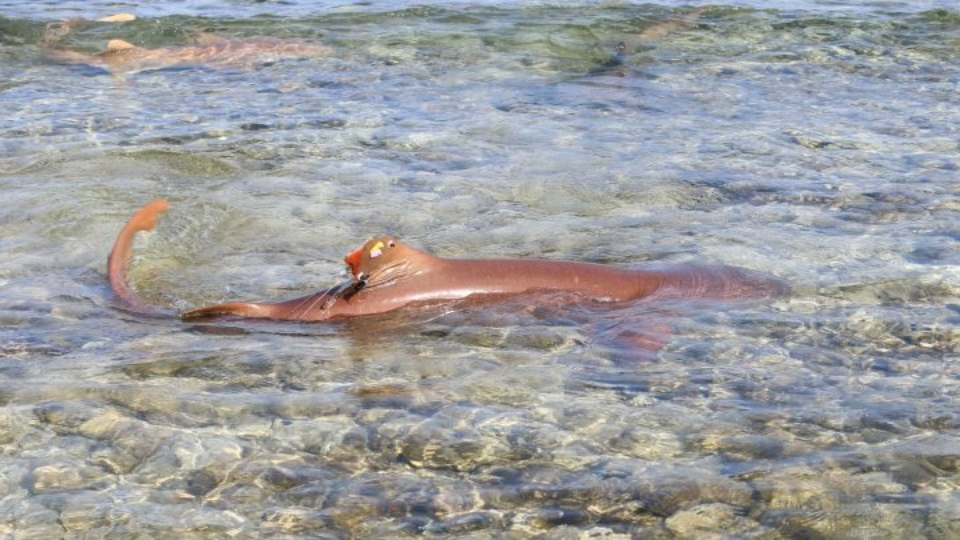
People don’t realize how much of scientific fieldwork is just waiting. We scan the sunny horizon for hours with little excitement, as only a few singular sharks swim near us. But we’re not looking for a single shark. What we need is the splashing and rolling that signifies a mating event. Finally in early afternoon, it happens! When nurse sharks mate, the male stalks its desired female, eventually clamping on to her pectoral fin and holding on tight while the pair thrash and roll around. While they’re distracted, our scientists get the chance to strike.
“Mating event!” Connor yells from his ladder perch, pointing at a disturbance in the water about 1,000 feet away. Immediately, Wes and Nick sprint toward the sharks—quite a feat in nearly waist-deep water. Clutched in their arms are the keys to catching a shark in the shallows—giant poles fitted with 10-foot nets.
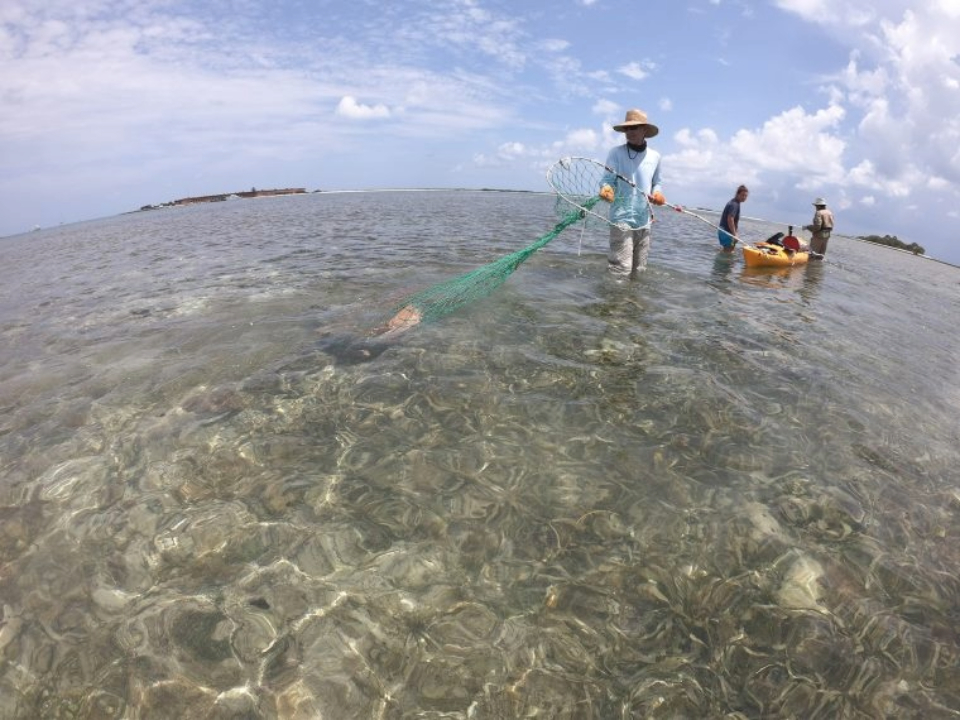
And they’ve got one! They manage to fit one of the nets over the shark’s head, spinning the long pole with practiced ease to trap the more than 7-foot predator. By now, the rest of the science team has made its way to the shark, pulling the scientific gear over in the kayak. There are no visible tags on the dorsal fins, but the tags could have fallen off. Our scientists also use the same type of tag a vet uses on a cat or dog, a small rice-sized tag called a Passive Integrated Transponder (PIT). Wes first scans the animal with the same type of scanner a veterinarian would use on a lost pet.
We’re in luck. This is a new shark. A female.
That means it’s time for data collection and tagging. Body measurements, blood samples, and tagging. The blood samples are new to this process. Anderson Cabot Center Associate Scientist Emily Jones collects blood for our Marine Stress and Ocean Health team to see if we can analyze hormone levels in the blood of sharks the same way we do in North Atlantic right whales.
Conveniently for shark scientists, most shark species, when flipped upside-down, go into a cataonic-like state called “tonic immobility.” It certainly makes sampling easier for us than dealing with a thrashing 9-foot shark. Still, the team is vigilant. This is a wild animal, and while a nurse shark won’t try to eat a human, a bite would ruin your day.
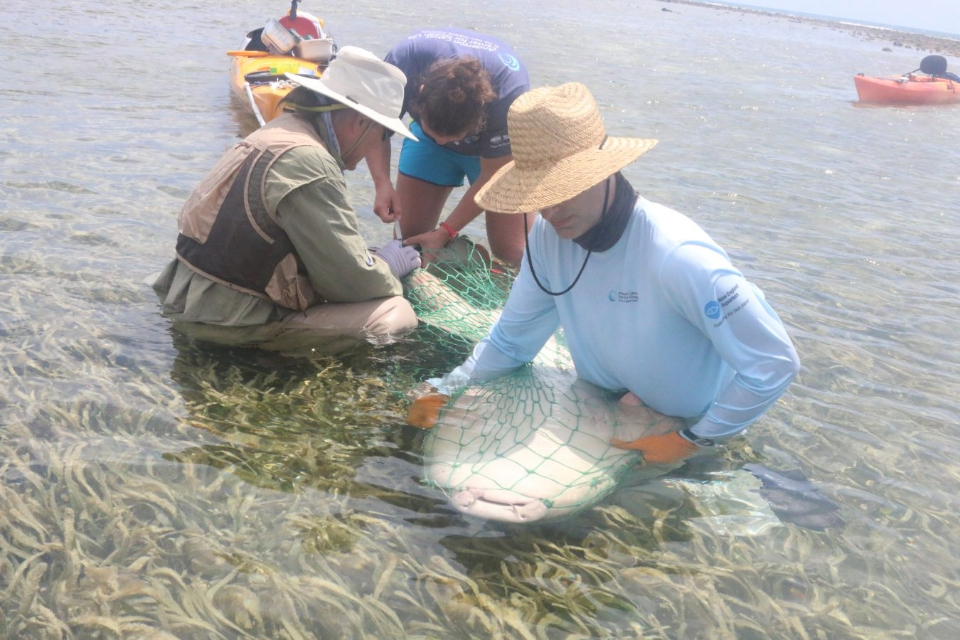
When the female shark is flipped back over, it’s time to tag her. She’s getting the full treatment. Two small plastic discs—blue and purple—adorn her dorsal fin, an easy way to identify her when we see her again days (or years) down the line. Next up is a big orange data-logging float called an accelerometer. Just like a FitBit™ watch or the fitness app on your cellphone, these tags collect data every second for a few days before popping off for our science team to collect.
Check out photos from the 2019 Nurse Shark Research Season
/

